LEFT TURN
Left arm extended straight out from shoulder and pointing in the direction of the turn.
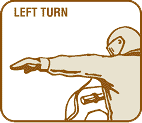
RIGHT TURN
Left arm raised at shoulder height, elbow bent and forearm vertical with palm of hand flat.
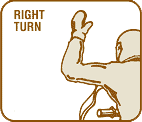
STOP
Left or right arm raised from the shoulder and extended straight up over the head with palm of hand flat.

SLOWING
Left arm extended out and down from the side of the body with a downward flapping motion of hand to signal warning or caution
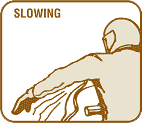
ONCOMING SLEDS
Left arm raised at shoulder height, elbow bent and forearm vertical, wrist bent, move arm from left to right over head, pointing to right side of trail.
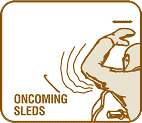
SLEDS FOLLOWING
Arm raised, elbow bent with thumb pointing backward, inhitch-hiking” motion, move arm forward to backward over your shoulder.
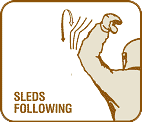
LAST SLED IN LINE
Raise forearm from handlebar and show clenched fist at shoulder height.
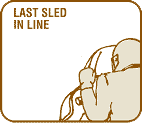
The use of hand signals can be, but should not be, controversial. Some areas and individuals have developed their own set of hand signals which can be fine if you are only in that area and ride with, or come across, other individuals who understand and use these same signals. But if you visit, or someone comes from, a different areas or uses different hand signs, then safety is jeopardized. This is also applies strongly to those who do not use any hand signals at all!
These hand signals are approved by the Canadian Council of Snowmobile Organizations, the American Council of Snowmobile Associations and the International Snowmobile Council.

